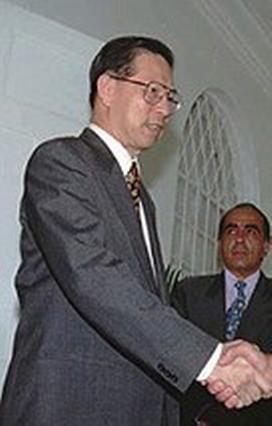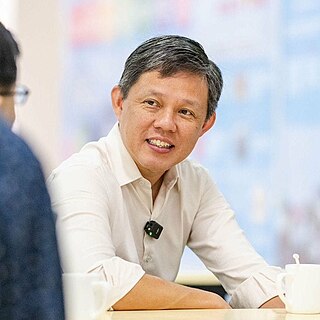Publicity
Numerous measures were taken to ensure there was a great degree of publicity to match the ambition of the campaign. It was the first Singapore campaign to adopt a mascot in the form of "Singa, the Courtesy Lion" in 1982. [1] In addition, the profile of the campaign was sustained through the use of radio, televisions and newspapers, where the campaign is highlighted in articles, documentaries, jingles, songs and other programmes. [1]
Posters and banners were hung up at prominent public places like bus stops, shopping centres and open-air markets. Debates, contests, talks, exhibitions, courtesy courses, [7] where leaflets, handbooks and pamphlets would be handed out, were also arranged to further educate the people. [1] To reach out to children, essay-writing competitions in all four national languages were arranged with "the objective of getting members and employees of unions and co-operatives and their children to think about and express their views on the importance of courtesy". [7]
Bills and correspondence from government and statutory bodies had courtesy slogans in them. [1] In later years, additional items in the form of stickers, badges, T-shirts, [1] mugs, keychains, vases, notepads and even a musical coin bank that played jingles composed for the courtesy month were amongst an assortment of memorabilia served to continuously remind the public of the ongoing need for Singaporeans to have courtesy ingrained into their lifestyle. Courtesy songs, fables and a website were introduced into the campaign as it entered the 80s and 90s.
Singa the Courtesy Lion

Represented by a Smiley logo as the campaign kick started, the National Courtesy Campaign had Singa the Courtesy Lion replace the Smiley logo in 1982. The lion was chosen because, in addition to the fact that Singapore was a 'lion city', it was believed to paint the picture of the ideal, courteous Singaporean: warm and friendly. [8] In addition, using the race-neutral lion overcame the issue of racial representation.
Singa the Lion is the familiar icon for courtesy that most Singaporeans grew up with. Since then, the Singapore Kindness Movement has adopted Singa as their mascot to promote messages of kindness.
On 15 May 2013, the Singapore Kindness Movement retired the mascot, by publishing a resignation letter written by the mascot, [9] [10] which was later revealed to be a media campaign to inspire kindness among the online communities in Singapore, but instead had thrown ire from the intended audience. [11]
Courtesy Campaign website
The Courtesy Campaign website was set up as a means of reaching out and staying relevant to a new generation of Singaporeans that used the computer and the Internet regularly. Additionally, this new generation of Singaporeans is seen to actively use Singlish, an English-based creole language that has strong Malay and Mandarin influences native to Singapore, as a means of casual communication with one another. It is thus unsurprising that the choice of language on the website being only English, would be deemed sufficient to reach out to the younger Singaporeans. Still, this is a departure from previous efforts in the campaign where English, Mandarin, Malay and Tamil would be used to get the message across. [12]
Nonetheless, there is equal racial representation on the website where under 'Courtesy Fables', stories with moral values and lessons of courtesy and consideration can be found stemming from the 4 recognised racial groupings can be found. This idea of English as a means to communication and one's mother tongue to inculcate desirable values and morals fall in line with the government's language policy on English as a means of communication through racial barriers, while the "imparting of moral values and cultural traditions is best done in the student's own mother tongue". [12]
Also, on the website there is a section on cyber courtesy, a testament to the campaign's drive to stay current and relevant with a list is a list of dos and don'ts. Additional such evidence can be found in the form of content exclusively for use on the computer can being available for download on the website as well, like screensavers, wallpapers and a Singa cursor for download.











